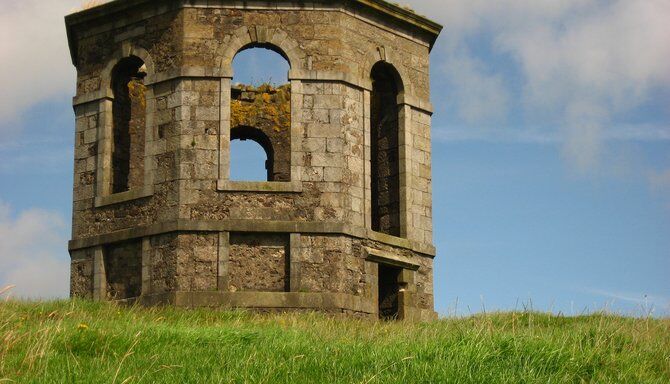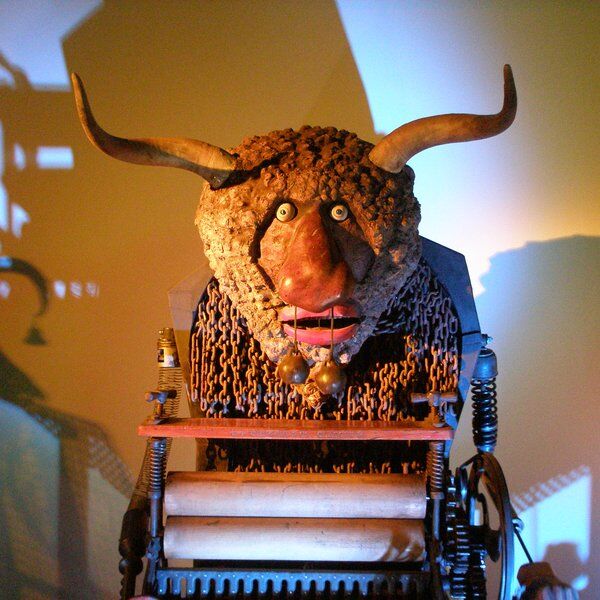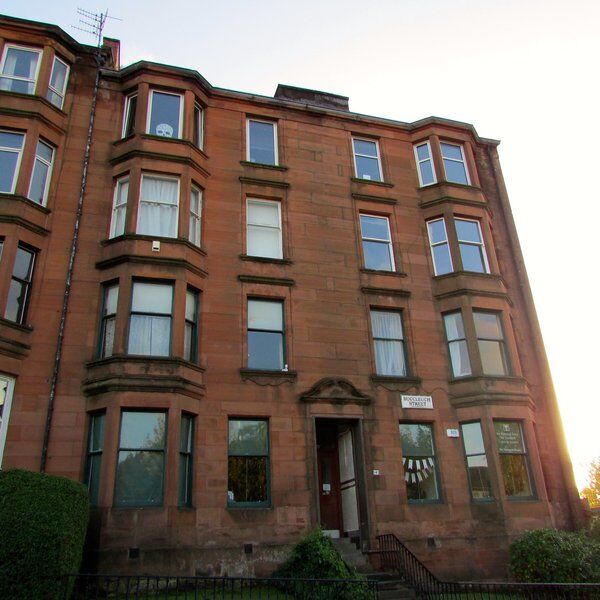Exploring Kenmure Hill Temple in Glasgow
Kenmure Hill Temple was formerly situated in the grounds of the Clan Semple ancestral estate but today the land has become Clyde Muirshiel, Scotland’s largest regional park.
Debate swirls regarding the temple's original function. Some speculate that it served as a place of worship for the estate owner's servants or his wife, while others suggest it was merely a decorative landmark, devoid of practical purpose. Legends persist, including tales of it being a nursery for an ailing child, a spot for local lovers, or a perch for women to observe hunting expeditions below.

Records indicate that the striking octagonal shaped temple, featuring large arched windows and missing its roof, was constructed around 1760 for Colonel William McDowell, a wealthy merchant who amassed his fortune in the West Indies. This adds a layer of historical context to the structure, suggesting it may have had a function beyond mere ornamentation.
Travellers passing through the area, whether by train from Glasgow to Ayr or along the A737 from Johnstone to the coast, cannot help but be intrigued by the temple's prominent position atop Kenmure Hill.
Designing the Kenmure Hill Temple
Constructed around 1760 for Colonel William McDowell, the temple's architectural inspiration is speculated to derive from James Gibbs' influential 1728 Book of Architecture. Its enigmatic design has only furthered speculation about its original purpose, fueling theories from Masonic temple to hunting lodge.
Despite suffering a lightning strike and subsequent fire in 1830, which damaged the roof, the temple retains its structural integrity. Survey records from 1780 indicate that it was surrounded by avenues of trees, a common feature for summer houses during its era, possibly inspired by Gibbs' architectural designs.
Inside, the octagonal temple has a main floor elevated above a basement, accessed by an external stone stair now lost to time. Maps indicate its dimensions, approximately 7 metres square. Despite the deterioration over the years, remnants like a fireplace and ashlar chimney emphasise its past grandeur.
Connections with the Auchentorlie Temple
Andrew Buchanan of Drumpellier, who acquired the Auchentorlie estate in 1737, had ties with William McDowall, as both were original partners in the Ship Bank from 1749. The architectural resemblance and shared name between the Auchentorlie Temple and the Kenmure Hill Temple suggest a potential connection between the two structures, possibly even sharing the same architect.
Although the term "Temple", which is what Kenmure and Auchentorlie are often called, is commonly used for hilltop follies across Britain, the similarity in design adds weight to a link between the two.

The History of the Kenmure Hill Temple
As part of the Semple estate the temple's history is closely intertwined with that of the land, now divided among various owners. Throughout the 19th and 20th centuries, the land, a sprawling 900 acres landscape, and thus the temple, witnessed changes in ownership and use, including the development of a golf course in 1906.
In 1935, the area was ravaged by fire leaving only remnants like the temple, gate arches, and a walled garden. Furthermore, the original Castle Semple House has long since disappeared, demolished in 1955. Despite these issues, the temple remains a poignant reminder of Glasgow's historic landscape.
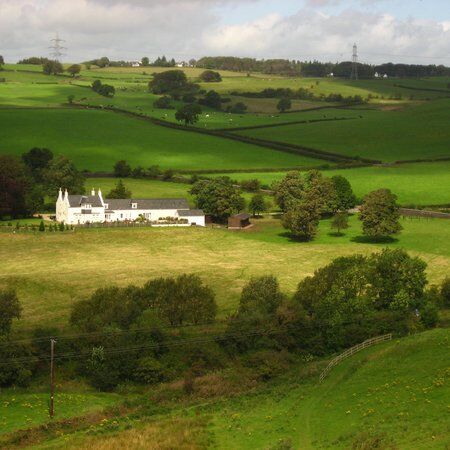
Getting to Kenmure Hill Temple
Commencing from Lochwinnoch in Renfrewshire, the route to Kenmure Hill Temple unfolds through woodlands and fields, meandering alongside the cascading waters and waterfalls of the Castle Semple Loch.
Following the Darly and North Johnstone Rail Trail, the path ascends towards Semple Temple, and a sense of anticipation builds, with the grand reward being the glorious views atop Kenmure Hill.
Spanning a distance of 9.8 kilometres, this relatively flat out-and-back trail presents a moderate challenge, with an average completion time of 2 hours and 16 minutes. Shared by both cyclists and pedestrians, it is essential to remain mindful of passing traffic.
Our Thoughts…
Despite all the theories, Kenmure Hill Temple’s original purpose aligns most prominently with that of a folly, serving as a decorative element within the landscaped surroundings of Castle Semple House. Surrounded by a deer dyke designed to give the illusion of freedom to the roaming deer, the Temple as an indication of the aesthetic vision of its time.
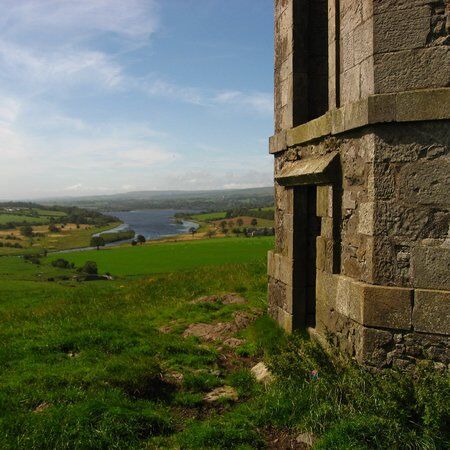
Discover More about Glasgow with CityDays
Ready to discover more of what Glasgow has to offer?
CityDays have a brand new treasure and scavenger hunt in Glasgow which combines the fun of an escape room with the historic facts and whimsical trivia of a walking tour!
Take the stress out of planning your visit to Glasgow and book your adventure today!
Not visiting Glasgow this time? Don’t worry, you’ll find us all over the world.
